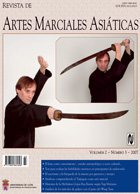El ascetismo y la búsqueda de la muerte por guerreros y monjes
DOI:
https://doi.org/10.18002/rama.v2i3.318Resumo
Não há resumo disponível em Português
Downloads
Métricas alternativas
Referências
ABE, R. (1999). The weaving of mantra: Kukai and the construction of esoteric Buddhist discourse. New York: Columbia University Press.
ANESAKI, M. (1999). History of Japanese religion. Tokyo: Charles E. Tuttle.
BAHN, P. & RENFREW, C. (1996). Archaeology: Theories, methods and practice. New York: Thames and Hudson.
BARBOZA, D. (2006). China turns out mummified bodies for display. New York Times (8 August).
BINGENHEIMER, M. (2005). Roushen pusa and corpus integrum – Whole body relics in Buddhism and Christianity. Proceedings of The Contribution of Buddhism to World Culture. Mumbai: Somaiya Publications.
BLACKER, C. (1975). The catalpa bow. London: George Allen and Unwin.
BODIFORD, W. (1993). Soto Zen in medieval Japan. Honolulu: University of Hawaii Press.
BOISSELIER, J. (1994). The wisdom of the Buddha. New York: Harry N. Abrams.
BUNCE, W. (1955). Religions in Japan. Rutland, Vermont: Charles E. Tuttle.
CHOZANSHI, I. (2006). The demon’s sermon on the martial arts. Tokyo: Kodansha.
CRAIG, A. (2003). The heritage of Japanese civilization. Upper Saddle River, New Jersey: Prentice Hall.
DAVID, R. & ARCHBOLD, R. (2000). Conversations with mummies. New York: William Morrow.
DESHIMARU, T. (1985). Questions to a Zen master. New York: Penguin.
DINGM E-YOUNG, J. & TAYLOR, E. (1998). Meditation as a voluntary hypometabolic state of biological estivation. News in Physiological Sciences, 13(3): 149-153.
EBREY, P. (1993). Chinese civilization. New York: Free Press.
EBREY, P. (1996). China. New York: Cambridge University Press.
EKLEKTOS, N., DAYAL, M. & MANGER, P. (2006). A forensic case study of a naturally mummified brain from the Bushveld of South Africa. Journal of Forensic Sciences, (51): 498.
FAURE, B. (1998). The Buddhist icon and the modern gaze. Critical Inquiry, 24(46): 768-813.
FRIDAY, K. (1997). Legacies of the sword. Hawaii: University of Hawaii Press.
GOEPPER, R. (1993) Aizen Myoo: The esoteric king of lust. Zurich: Artibus Asiae, Museum Rietberg.
HAKEDA, Y. (Trans). (1972). Kukai: Major works. New York: Columbia University Press.
HITOSHI, M. (2001). Shugendo: Essays on the structure of Japanese folk religion. Michigan: Ann Arbor Center for Japanese Studies, The University of Michigan.
HOFFMAN, Y. (Ed). (1986). Japanese death poems. Tokyo: Tuttle Publishing.
JEREMIAH, K. (2006). Taya cave. Kansai Time Out, (352): 35.
KATO, B., TAMURA, Y., & MIYASAKA, K. (Trans). (2003). The threefold lotus sutra. Tokyo: IBC Publishing.
KIM, Y. (1973). Oriental thought. Maryland: Littlefield, Adams Quality Paperbacks.
KIYOTA, M. (1967). Presuppositions to the understanding of Japanese Buddhist thought. Monumenta Nipponica, 22(4): 251-259.
MIYATA, T. (2006). A Henro pilgrimage guide to the 88 temples of Shikoku Island, Japan. Los Angeles: Koyasan Buddhist Temple.
MORREL, R. (1987). Early Kamakura Buddhism: A minority report. Berkeley: Asian Humanities Press.
MURPHEY, R. (2004). East Asia: A new history. New York: Pearson Longman.
NEWMAN, C. (2005). The monk who embalmed himself. National Geographic, (207): 5.
RAVINA, M. (2004). The last samurai: The life and battles of Saigo Takamori. New Jersey: John Wiley and Sons.
SADLER, A. (Trans). (1972). The ten foot square hut and Tales of the Heike. Tokyo: Tuttle Publlishing .
SANGHARAKSHITA (Trans). (2001). Dhammapada. New York: Barnes and Noble.
SHARF, R. (1992). The idolization of enlightenment: on the mummification of Ch’an masters in medieval China. History of Religion, 32(1): 1-31.
SHARF, R. & SHARF, E. (Trans). (2001). Living images: Japanese Buddhist icons in context. Stanford: CA: Stanford University Press.
SHIMABUKURO, M. & PELLMAN, L. (1995). Flashing steel: Mastering Eishin-Ryu swordsmanship. Berkley, CA: Frog, Ltd.
SMALL, L. (2004). Fascinating relics. Smithsonian, 34(10): 10.
SOCIETY FOR THE PROMOTION OF BUDDHISM. (1998). The teaching of Buddha. Tokyo: Bukkyo Dendo Kyokai.
STEVENS, J. (1989). Abundant peace. Boston: Shambala.
SUGAWARA, M. (1985). Lives of master swordsmen. Tokyo: East Publications.
SUNADOMARI, K. (2004). Enlightenment through aikido. Berkeley, CA: North Atlantic Books.
TAKAMURA, Y. (1999). An interview with Takamura Yukiyoshi. Aikido Journal, 26(2): 22-33.
THURMAN, R. (Trans). (1994). Tibetan book of the dead. New York: Bantam.
TURNBULL, S. (2005). Warriors of medieval Japan. New York: Osprey Publishing.
TURNBULL, S. (1977). The samurai: A military history. New York: MacMillen Publishing.
TYLER, R. (Trans). (1987). Japanese tales. New York: Pantheon Books.
UESHIBA, M. (1991). Budo. Tokyo: Kodansha.
VISSER, M. (1935). Ancient Buddhism in Japan. Leiden: E.J. Brill.
WALTHALL, A. (2006). Japan: A cultural, social, and political history. New York: Houghton Mifflin.
WILSON, W. (2004). The lone samurai. Tokyo: Kodansha.
YAGYU, M. (2003). The life giving sword. Tokyo: Kodansha.
YAMAMOTO, T. (1979). Hagakure. Tokyo: Kodansha.
Downloads
Publicado
Como Citar
Edição
Secção
Licença
Direitos de Autor (c) 2012 Ken Jeremiah

Este trabalho encontra-se publicado com a Licença Internacional Creative Commons Atribuição-NãoComercial-CompartilhaIgual 4.0.
Os autores que publicam nesta Revista estão de acordo com os seguintes termos:
- Os autores cedem, de forma exclusiva, os direitos de exploração (reprodução, distribuição, comunicação pública, transformação) à Universidade de Léon, podendo estabelecer, em separado, acordos adicionais para a distribuição não exclusiva da versão do artigo publicado na Revista (por exemplo: alojar no repertório institucional ou publicá-lo num livro), com o reconhecimento da publicação inicial nesta Revista.
- O trabalho encontra-se na Creative Commons Attribution-Non Commercial-Share Alike 4.0 International License. Pode-se consultar aqui o resumo e o texto legal da licença.
- Permite-se, e sugere-se, que os autores difundam electronicamente as versões pré-impressão (versão antes de ser avaliada) e pós-impressão (versão avaliada e aceite para publicação das suas obras antes da sua publicação), favorecendo a sua circulação e difusão, e com ela o possível aumento da sua citação e alcance pela comunidade académica.











